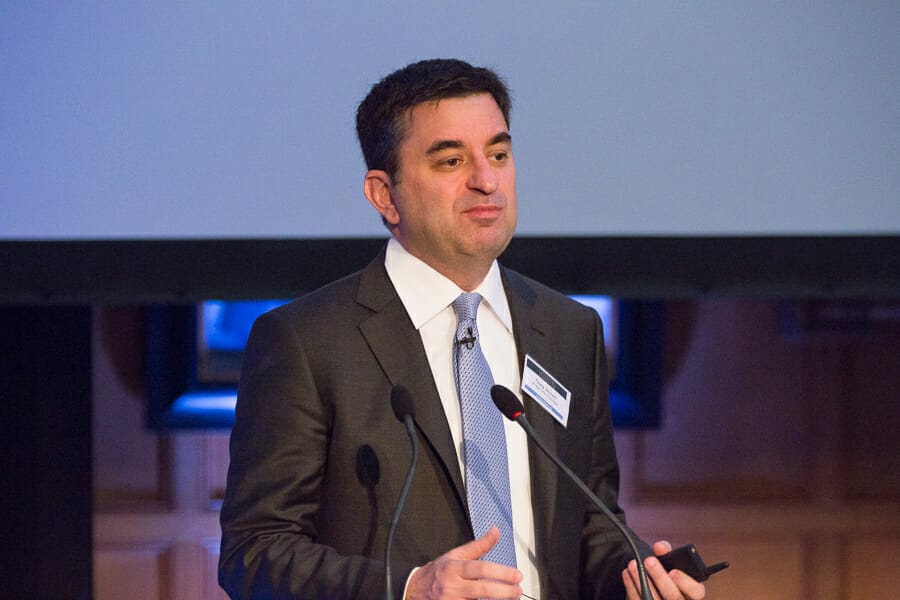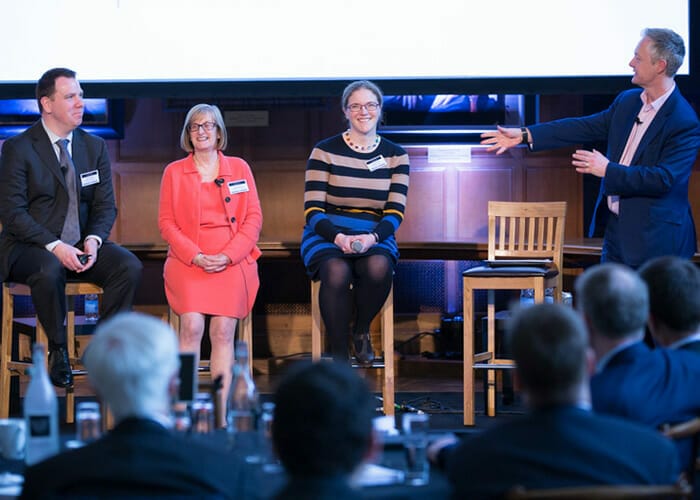“The current pricing is the worst in history in terms of achieving long-term goals,” warned Greg Jensen, co-chief investment officer of Bridgewater Associates, the world’s biggest hedge fund.
“We have seen a fall in yields in all assets that puts 10-year returns for a traditional 60/40 portfolio at 2 per cent to 3 per cent, and for most entities, this won’t cut it,” he said.
Jensen spoke at the Fiduciary Investors Symposium at the University of Oxford. He drew on his two decades at Bridgewater to highlight important trends ahead and dispel any lingering investor hope that a downturn won’t materialise.
The signs of troubles ahead have been masked, he said, by the fact that asset prices have done so well in recent years. Valuations have grown steadily higher, thanks to monetary policy that has pumped liquidity into markets, creating a massive excess of cash relative to assets. Central banks ploughed into bond markets, going “from 5 per cent to 20 per cent of the market”, Jensen said. That liquidity has driven up asset prices to yields that are similar to cash, and squeezed the private sector out of bonds, pushing investors towards riskier assets.
“The private sector has more in illiquid, risky assets than at any point in history,” said Jensen, who pointed to the flat risk curve as another indication of low returns ahead. “Today, people are far out on the risk curve, with very low expected returns.”
The current economic cycle has lasted so long partly because of central bank caution about cutting back on liquidity, but also because inflation for goods has stayed low. Yet Jensen said quantitative easing (QE) had caused massive inflation; it just has occurred in financial assets rather than goods, and its impact has been just as significant.
“You can create money and where it goes [determines] what it drives up,” he said.
Life after QE
QE has worked and central banks are pulling back. Now the impact of the removal of that liquidity, rather than the production of it, will play out. Nowhere more so, in Jensen’s prediction, than in private-sector reluctance to buy the asset issuance that lies around the corner. Governments, particularly in the US, will increasingly call on the private sector to finance large budget deficits, yet investor appetite is muted. Jensen predicted policymakers would struggle to navigate this.
“There used to be enough liquidity to buy into a dip, but everyone is fully allocated, and a big gap is going to be exposed.”
He expects to see investors either lever up to buy these assets or sell out of risky existing holdings and move into safer assets; either way, there would still be a capital shortage that would probably show up in the bond markets first.
“At today’s prices, the private sector has no interest in bonds,” he said. “Yet they are going to need to be [convinced to] buy the budget deficits that are being created.”
Governments face the challenge of drawing up a fiscal and monetary policy to deal with the downturn, when they’ve already used up the tools of low interest rates and QE. Policymakers also face secular trends such as mounting deflationary pressure, accentuated by automation, and changing demographics.
“Today, there is more debt, which will be a draw on future income,” Jensen explained. “But there is also less income because there are fewer workers in terms of paying back that debt. This is a gap we call the big squeeze.”
Rising interest rates would also put financial assets under pressure and Jensen urged slow tightening; he added that the interest rate rises that had already taken place wouldn’t play out for nine months.
“The mistake of being too easy is better than the mistake of tightening too quickly,” he said.
In today’s late cycle, most assets do poorly, bar exceptions such as commodities and inflation-linked bonds. Jensen urged investors to address this reality by lowering expected rates of return to something closer to what is achievable. He also suggested close portfolio analysis to see how different allocations perform in periods of falling and rising growth and “where the environmental bias lies”, to build a portfolio for a downturn.
Investors should seek out passive assets that have a bias different to their current portfolio, Jensen said. Another plan could be finding alpha managers that are more likely to do well when things go poorly.
Geographic diversity
He urged diversity not only of assets but also of geography.
“We don’t know which countries will break which ways,” he said, and suggested splitting portfolios more evenly between the emerging world – particularly China – and the US and Europe.
“People aren’t diversified this way and the picture in China and a few other countries is not as dire as the picture in the developed world in terms of expected returns,” Jensen said.
He advised remaining liquid enough to react to circumstances, which could evolve quickly.




